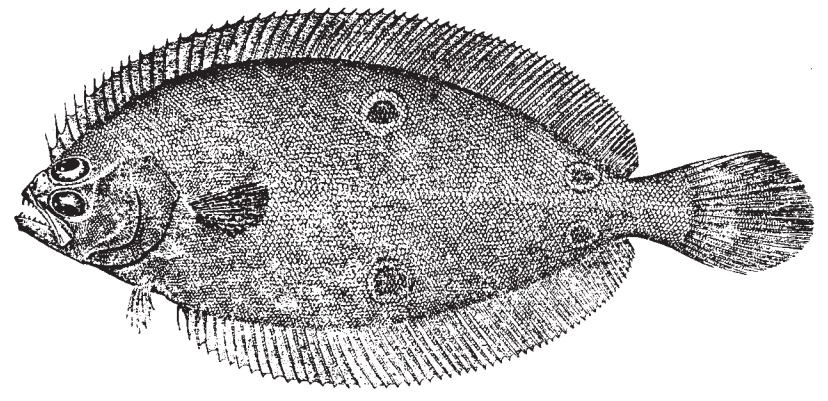Chapter: The Diversity of Fishes: Biology, Evolution, and Ecology: Teleosts at last II:spiny-rayed fishes
Order Pleuronectiformes

Order Pleuronectiformes
Flatfishes are distinctive, compressed acanthopterygians that all share certain features, most noticeably a marked asymmetry that includes having both eyes on the same side of the head in juveniles and adults (Fig. 15.27). Flatfishes begin life as bilaterally symmetrical, pelagic fishes but during the larval period or shortly thereafter, one eye migrates to the other side and the fish settles to the bottom, lying on its blind, more flattened side (see Complextransitions: smoltifi cation in salmon, metamorphosis in flatfish). Eye movement is made more complicated by the position of the anterior portion of the dorsal fin, which often originates above or ahead of the eyes. Teeth, scales,paired fins, and pigmentation also typically differ between sides. Families are generally either right-eyed or left-eyed defined by which eye stays put. Flatfishes are benthic, carnivorous,marine fishes (with perhaps 10 freshwater deriva

Figure 15.27
A pleuronectiform, the bothid Fourspot Flounder,Paralichthys oblongus. Drawn by H. L. Todd in Colletteand Klein-MacPhee (2002).
Some species are able to change the coloration of the eyed side to match the shading pattern of the background upon which they rest. Flatfishes constitute important fisheries for forms known as dab, flounders, halibuts, plaice, sole, tonguefishes, turbots, and whiffs. Approximately 500 of the 678 species are in five large families. Ancestral, intermediate,and closely related forms to flatfishes are not known and the fossil record is limited.
The primitive psettotid spiny turbots show the leastmovement of the eye during metamorphosis. The Paralichthyidae include the Summer Flounder (Paralichthys dentatus) and California Halibut (P. californicus), the latter species reaching a size of 1.5 m and 30 kg. The pleuronectid right eye flounders include the larger halibuts such as the Atlantic and Pacific halibuts. Females of the Pacific species, Hippoglossus stenolepis, may live 40 years and reach barn door proportions of 3 m long and 200 kg mass, but may not mature until they are 16 years old. The fishery for Pacific Halibut, unlike that of the depleted Atlantic species,is one of the better managed fisheries in the world. Several other commercially important flatfish species are pleuronectids, including the Arrow tooth Flounder, Petrale Sole,Rex Sole, Winter Flounder, Yellowtail Flounder, and English Sole. Among the bothid left eye flounders is the Peacock Flounder (Bothus lunatus) of the Caribbean. An achirid American sole, the Hogchoker, Trinectes maculates, commonly invades rivers of Florida and the Atlantic coast ofthe USA. The true soles however are in the family Soleidae, which are usually right-eyed. Among the soleids is the RedSea Moses Sole, Pardachirus marmoratus, which exudes atoxin, pardaxin, reported to be a natural shark repellant. The Common Sole, Solea solea, of European waters is reported to raise its black-tipped pectoral fin when disturbed in an action that mimics the raising of the dorsal fin of venomous trachinid weeverfishes. The cynoglossid tonguefishes are the most elongate of the flatfishes and also show considerable variation in habitat, including shallow water and burrowing forms (e.g., Blackcheek Tonguefish, Symphurus plagiusa), several species that occur as deep as 1900 m, as well as purely freshwater forms (three species from Indonesia).
Related Topics